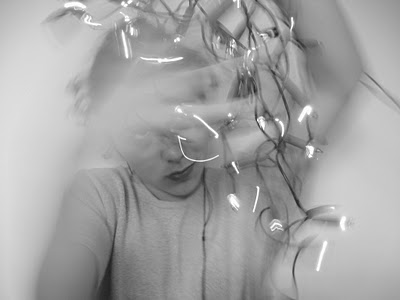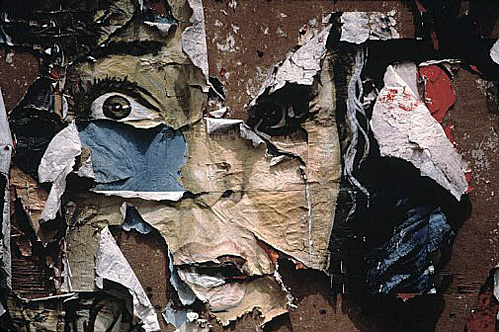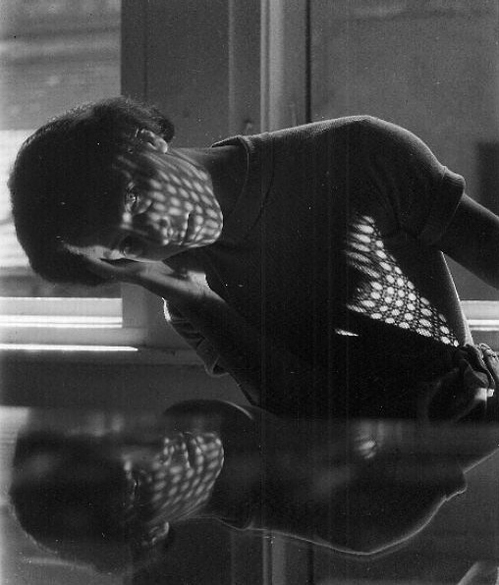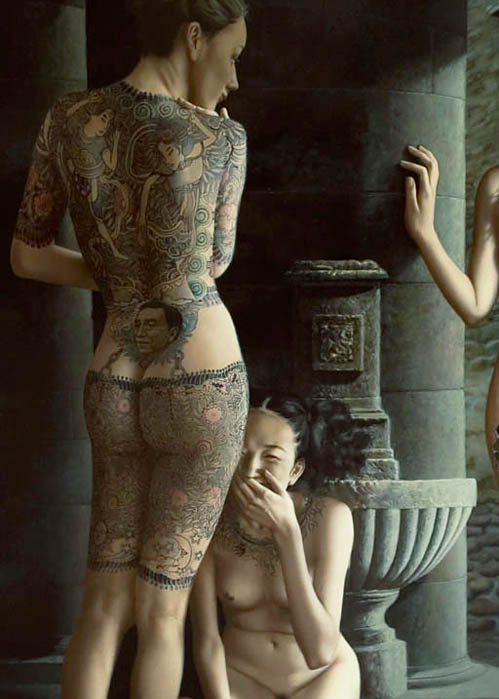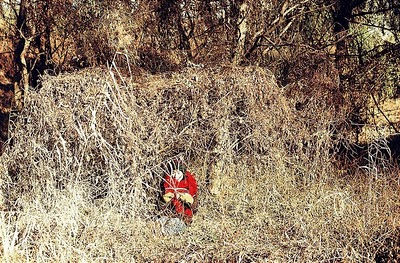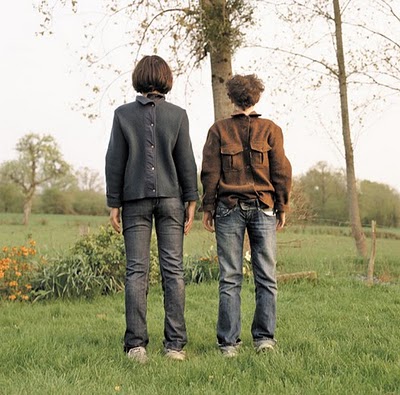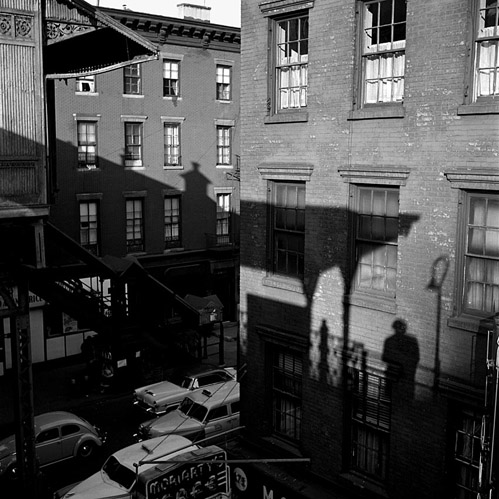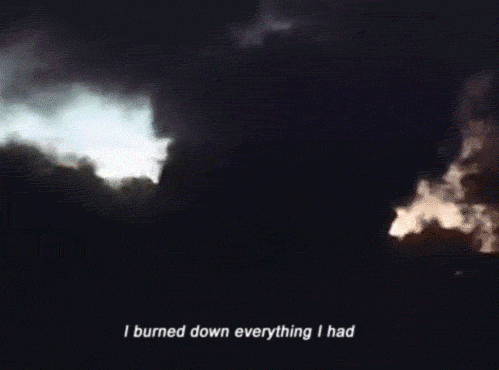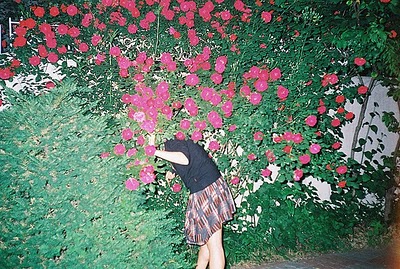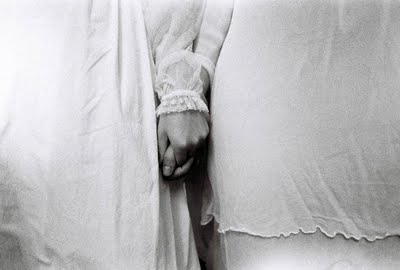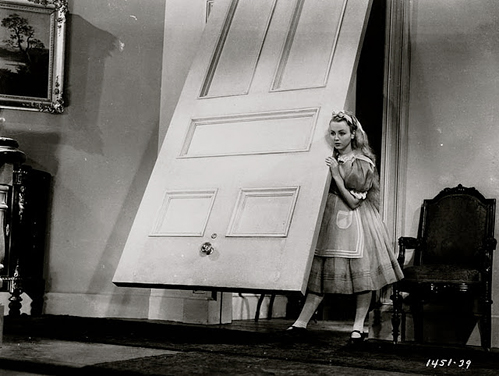
Creative Engagement by Martine Batchelor (Toronto, June 17-19, 2011)
I would like to look at grasping and non-grasping and what I would call creative engagement. Yesterday we were talking about nama factors, omnipresent factors, we won’t go into the details because it’s a little technical, but what is very interesting is contact and feeling. What meditation and the path can help us to do is change our power to make a choice between contact and feeling. We have contact through the senses, we hear, taste, we encounter somebody, we have an idea. And from that contact generally you have a feeling tone. Pleasant, unpleasant, neither. Often we go very much on automatic. Something is pleasant – I want more. I want it to continue. You have a nice weekend with your friend and as they leave what do they say? “Let’s do this again.” Let’s produce exactly the same feeling. You can have another nice experience with your friend, but you cannot reproduce exactly the same condition and feeling. But often that’s what happens. If it’s pleasant we want more. If it’s neutral we’re relatively bored. And if it’s unpleasant we don’t want it. Even before it’s happened we don’t want it. We push it away. We have a very automatic reaction and so I would say that the meditation helps us to be with the feeling — it doesn’t change the feeling tone — but it makes us be with the feeling tone in a different way. It’s less automatic, and we start to have a little more choice.
What the meditation helps us see is that there is contact and there is a feeling tone. Often we think that’s the way I am. I am an angry person. I am a sad person. But actually you might have a tendency to be angry or sad, but you’re not angry or sad all the time. Generally it comes out of conditions. After there is contact and sensation, either you can grasp, or you can creatively engage. The meditation helps us to have more possibility for creative engagement.
Grasping
I wanted to speak about grasping — how does it work? What is the process of grasping? I would say that in grasping you have identification. The two go together. I’m going to show it to you, to demonstrate how it works. Let’s say this (Martine holds up a stick) is precious to me, either it’s very expensive or very spiritual, and it’s mine. If it’s mine I want to keep it, I don’t want to share it too much with others. If I do this for any length of time two things will happen. The first one is that I get a cramp in the arm (from holding it up), and often that’s a way of recognizing grasping – to notice that there is tension. If there is tension – where am I grasping? What is it I am grasping, what am I identifying with? But there is something much more problematic in terms of grasping or holding in this way. If I continue to hold on like this, I cannot use my hand for anything else. I am stuck to what I am grasping at. And that is the main problem. The grasping occupies us. And we magnify what we are grasping.
Then you could have three solutions to this problem of grasping. The first solution is to cut the hand off, but that is a little drastic I think. That’s the ascetic path. The next one is to get rid of the object. But the object is not saying, “Come, come, you really want to grasp at me.” If you’re in front of certain shop windows you might see the iPad 2 “Oooh, you really want me!” If you see some clothes or whatever you like, you feel the attraction comes from the object. But the attraction doesn’t come from the object, it comes out of conditions, and the attraction comes from us, and how much we put on it. If only I had this I would be happy. And this is something the advertising industry totally understands, they really understand grasping, they know how to make objects that glow. Sometimes we see something in an ad and we think wow, it looks amazing. But when we see it in real life it doesn’t have the glow any more. And that’s because it’s not around the things that make it glow. Generally you have two very beautiful people with very beautiful children in a very beautiful house and then the thing is placed there. They know how to make it glow. The problem is not with the object. I think what we do in meditation is slowly release, so then the thing can move.
Sometimes we can have meditative experiences and states. I’ve often found that people who sit in meditation are waiting for something special to happen. When you feel a little something happening, oh, this is it, it’s awakening in the next two seconds. But I would say mostly the effect of the meditation is that at the end of 30 minutes, even if you didn’t consider it a good meditation because you were sleeping or you had thoughts, but at the end you have a little feeling of release. Generally this is what meditation helps us to do. This release happens by cultivating concentration and experiential inquiry. Instead of being tight there can be this release, and over time we can bring this release instead of grasping into daily life.
Proliferation and Exaggeration
So the way the process works is that first there is this grasping with identification, it goes together. You grasp and there is identification in some way. I, me, mine. Then by grasping you limit yourself to what you grasp at. You solidify around it, and the next thing that happens that is the most problematic is that you magnify it. In grasping there is this amplification effect, which then is very difficult for our creative potential to be activated. Because generally it becomes very abstract, as we grasp we go a little into abstraction. I would see two tendencies that emerge out of grasping, which are proliferation and exaggeration. Let me give you an example of what I mean by proliferation. You see this beautiful orchid. It looks like the real thing. Sometimes I take an example of flowers and they’re fake, and that’s funny. But this one looks relatively real. So you have this beautiful flower, the colour, the shape, it’s beautiful. I look at it, wow, it’s beautiful. I am with it, it adds something to the experience of being in the room. I would say that’s not grasping. But then I continue to see the beauty of the flower and I start to think, “I really like this flower. I would like to have this flower in my house. What kind of flower is it? In order to have this flower do I need a green house? Where can I buy a green house. It is expensive to have a green house. Maybe I need to rob a bank to have a green house?” As soon as I want it, I extrapolate from it, and I’m no longer with the beauty of the flower. It does not mean that you cannot think of acquiring an orchid. But to see that when you move into the grasping generally you move into abstraction and you’re no longer with the beauty of the flower as it appears now.
That’s one thing that happens. And you can have positive proliferation. A negative proliferation can be very painful. It often happens with fear. You might be safe, nothing is happening to me. But suddenly you might think: what if something happened? I have this friend… Once I was leading a retreat and she was crying during the whole afternoon. And I asked her, “Are you OK?” And she said, “I’m fine, don’t worry.” At the end of the retreat she told us what happened that day. That day she suddenly had this thought, “My cat is dying. My cat is dying without me because my friend is not feeding my cat.” And she proliferated negatively the whole afternoon about it. While the cat was perfectly fine. But we have these kinds of things. Suddenly you have an idea, you grasp at it, you proliferate it and you can end up in a very painful place.
Also what can happen with grasping is what I call exaggeration. Something is good, it’s fantastic. When you fall in love suddenly you grasp at the person, the person is so amazing, every minute you’re with them you’re on cloud nine and it’s fantastic, and it’s the greatest thing that happened to you. and if you’re lucky it lasts a week or two weeks, and then that goes, and then you’re confronted with the real person without exaggeration. And if they’re really nice it’s ok, but then you might start to think well, they’re a bit weird. You start to see the whole person, not just the exaggeration you produced. If you exaggerate, then it can be very hard to creatively engage.
We can also exaggerate negatively. We often do that. This is terrible, this is awful. I remember many years ago when my grandmother was still alive I took care of her for three days because my mother had to do something else. So in the morning I go and take care of grandma, you know, get her up, and I came there and she looked a little troubled, and I look down and realized she had a little accident in the night. There was feces everywhere, and I had walked in it. And at first I thought, “Oh no,” I could feel the grasping arise, going towards exaggeration which would have gone to thought, action, words, and I thought, “No, let’s deal with it as it is right now.” I took care of grandma first, made her breakfast, cleaned everywhere, and to my utter surprise in an hour it was dealt with, no problem. That’s creative engagement. If you grasp you proliferate, you exaggerate, you go into abstraction, and it can be really nasty in that moment. Or there is creative engagement. This is unpleasant, this is difficult, but how can I deal with this? And then generally things are much easier because we haven’t exaggerated them. The problem in grasping is the proliferation, the exaggeration.
Words
What I would like to look at a little is that there is contact, feeling and the senses. So do we grasp or do we creatively engage? First we have sound, and that’s what I would recommend for today’s meditation, just to do listening meditation. But sound. Sounds are interesting because what is a sound? I say something, it’s gone. It appears, it stays a little while and disappears. A word is just… Let’s do an example. I look at you very nicely, I smile at you, yes yes yes. And I say, “You are enlightened! You are all enlightened!” “Ooooh, she said I’m enlightened. Soon I’ll have many disciples, fantastic.” Enlightened, it’s just a word, does it make a difference? Or, I can look at you a little seriously, a little dour. “You are stupid.” “Oh! She said I’m stupid. She’s stupid to say I’m stupid.” Perhaps in two years time you’ll be sitting in meditation and thinking, “Do you remember the time when Martine said I’m stupid? I thought that was so hurtful, so painful.” But it’s just a word.
It doesn’t mean that you hear a word and it doesn’t matter. But creative engagement invites us to ask: Is this saying something about me, or is it saying something about the person who is saying the words? Sometimes somebody says something to us, and they’re saying something useful, even if it’s not pleasant. I used to live in community and once we had this community meeting every week. Once this friend decided to really go for me. He went for me for a long time and it was really unpleasant. He said, “You organize us all the time, I’m fed up with your organization.” But then I thought he has a point, I like to organize, I’m good at it, but at the same time if I do it too much people don’t enjoy it. I thought hmm, he has an idea. After that I became more careful, when was it useful for me to organize, and when was it not? That was a great teaching for me, to creatively engage with that.
Another time I was working with some people and I had to see them once a week and one fellow said “I’m not going to meet up with you, and I’m fed up.” For twenty minutes he shouted at me, accusing me of this, accusing me of that. But it was all about him. I had not done anything he said. So I just listened to it, I did not grasp at it. And then I said, “Well if you really don’t want to meet me you don’t have to, not at all.” Later on he came and he met me anyway, but to me the creative engagement was that I did not react to it. And secondly I realized that if he does this to me, he must do this to other people, so then I sat him down and said “Wait a minute. You can do it to me, it’s ok. But be careful if you do this.” We had a long talk about it, because I realized how he might be with other people he was working with. So it’s not just that you listen to a word and say, “OK, it’s not me.” But what does it mean in the larger environment for somebody to speak in that way? Once we were in another community when someone started to be bullied. And four of us got up, I thought it was wonderful, four of us all got up in unison and went to the guy and said, “Stop it, you cannot do this with this person.” Because he was picking on someone who was weaker and who could not defend herself. So the creative engagement doesn’t mean who cares. But you come from a different place – from a place that is open and stable. How am I with this word? How can I creatively engage with this word?
Seeing
Then you have the sight. You see something, we see the paintings in the room, we see the people here. And what do you do with what you see? It’s really interesting, right away there is a feeling tone from perception, from our experience, our culture. You see something, “Hmm, I like it. I don’t like it.” We often do that with people. “Hmm, I like her hat. I don’t like her shoes.” Very quickly I like, I dislike. We assume certain things about people because of the way they look. Recently we were at a conference and there was a huge contingent of younger people full of tattoos, some were really covered from the head. Generally we don’t have so much connection with people who have tattoos, people stay inside their groups, and it was wonderful, I mean, I totally fell in love with all of them, they had such energy and were really teaching the dharma. What I like is when I’m surprised by someone who looks some way but is different. I like to have to shift my preconceptions. Grasping is kind of like fixing. You fix yourself, you fix others. Creative engagement is helping you to meet the whole of the situation, the whole of the person, you’re not just sticking to one thing, you can see the conditions that are arising that create your impression of the person and the situation.
But one thing with sight, which is interesting is that often we have a tendency to grasp at something that is not there. That you grasp at something that is there is relatively fair enough. I like it, I don’t like it. But when you grasp at something that is not there… and I saw that when we moved to our new house. We had some work done, we have a little meditation room and we needed a staircase in order to go in the mediation room. I had a vision of this beautiful wooden carved staircase. We never got it because the guy we wanted couldn’t do it, and we got someone else and he did something really ordinary, just about okay. Whenever I went to the meditation room I would feel funny and I asked myself what’s happening? I realized I was seeing two staircases. There was a beautiful one and there was an ordinary one. I was thinking this one is not as good as that one. And then I thought wait a minute. This one is good enough. I can go into the meditation room, that’s the main point, and let it go.
The comparing mind. Often we do this in meditation. I’m sitting in meditation and I feel that next to me is another meditator, and generally next to me is an ideal meditator. She has no thought, is floating a little above the cushion and has no pain. And you compare yourself to that one, and yes, compared to the ideal meditator, yes, you’re not that great. The ideal meditator doesn’t exist, there is only a meditator working in this moment, who is doing the best that she or he can, with her or his conditions. So to be careful when you start to do this, it doesn’t mean that you cannot hope for something better. But there is the comparing mind that weighs our present conditions against something that is abstract, instead of being creatively engaged with the situation in this moment. Grasping at something that is not there.
Taste
Then you have taste, and with taste again you can see that. When you eat something “Mmm,” or if it’s something you don’t like, “How can I get rid of this?” Yesterday I was in a very Korean restaurant and there are two things I really don’t like in Korean food because I had them when I was in the monastery. But what’s interesting is that for Koreans these two things are a delight because they’re rare and they think it’s wonderful. One thing is a soup made with slices of rice cake, for me it was like plastic, like eating plastic in a hot broth, I could never digest it. And the other one was this cold noodle soup. I saw them in the menu and I thought I’m not going to have this. Again there is this contact feeling of no, even though other people love them. So again, to see what do we do when we have food. What happens generally is if we like it we want more, so you have a second slice of chocolate cake, a third slice of chocolate cake and then you have indigestion. And it’s not that we’re hungry at all, but there is a grasping, I want more. And what do we want more of? To continue the pleasant feeling. The feeling tone. This is an interesting meditation, to be aware of the pleasant feeling tone and how we generally want it to continue.
Newness
One thing that is interesting with food sometimes is that we grasp at the newness of something. And that is problematic because we cannot have a new experience every two seconds. We can’t. But you can really see it with food. Let’s say you haven’t eaten something for a really long time. I had that experience after being for ten years in Korea to go to France in Paris and eat couscous. I went to this restaurant and I had this wonderful couscous. It was amazing, fantastic, the greatest thing in the universe. So what do I do? The next day I go to the same place at the same time and have the same couscous. And it’s ok. But it’s not fantastic, it’s not the greatest thing in the universe anymore. But it was the same thing and I was the same person. And often I think that’s what happens, this is dangerous, to grasp at the newness.
The newness comes from comparison. I think this is the same thing that happens when we meditate. When we meditate at the beginning we are likely to have special experiences, it feels amazing, because it makes you experience yourself in such a different way. And you think wow, this is amazing. But then you meditate for ten years, and you don’t experience yourself in that way anymore. And you think your meditation is not working. Actually it’s the opposite, it proves the meditation is working because there is less and less difference. At the beginning it’s amazing because you feel so different. And then over time as you integrate the meditation with your life, there is more peace, there is more clarity, there is less grasping.
Some years ago I was teaching a retreat and met a young man who had not done much meditation. Before his interview I had just said that whatever you feel is impermanent, it arises, it passes away. He come to me and said, “I am having this amazing experience, I don’t want it to pass away.” I said, “Well…” He really experienced that he was not his thought. He had thoughts, but he was not them. He suddenly experienced himself in a such a different way, he had a feeling of spaciousness, he was so liberated, so of course he wanted it to go on forever. And sometimes you have sensations in meditation that are physically painful. And I’m not saying that meditation will help you to have no pain. But it will help you not to amplify. This is a problem with pain, generally we go quickly into abstraction. This is terrible, it will be like this forever, I won’t be able to do this, this is really awful. Instead of thinking: “I have this illness, I have this sensation, what can I do about it? How can I be with it?” I think that’s what a meditation on the body invites, going inside the sensation if it’s not too strong, but if the sensation is too intense then you might not be able to do this, and then lack of attention, as the Buddha said, might be better. But if you have what I call medium pain, you can try to go into it, and often you can experience it in a different way. If you grasp at the pain you generally proliferate and exaggerate, and that will amplify the pain. Creative engagement will not take the pain away, but it can help us experience it in a different way.
Thoughts
And then you have thoughts. It’s interesting how meditation can make us see how we come in contact with a thought. One moment we don’t have a thought, the next moment we have a thought. So we become more aware of, “I am this thought.” And to see that we grasp at thought. We grasp very quickly with feelings, and also very quickly at thoughts. This thought is me. And the thought can have such a physiological effect. If you are frustrated by a situation, and you have the thought, “I am hopeless,” suddenly the whole body and mind freezes, and you can’t move, paralyzed by that thought. Am I as hopeless as my thought it telling me? Generally we can be frustrated, things don’t go our way, but we are not hopeless, our senses are working, we can creatively engage. But if you grasp at “I am hopeless” then you are hopeless forever. I have always been hopeless in the past, and I will always be hopeless in the future. This is a problem with grasping, it makes this generalization, it stops our creative potential. To see that we get lost in an abstraction. That’s why the idea of emptiness is interesting if you see it as an idea about the flow of conditions. In meditation we realize we are formed by an amazing number of conditions. This inner flow of conditions meets this outer flow of conditions. Arising and falling away. And then to think about creative engagement, that I’m not stuck with the conditions, that I have a creative potential, and I can creatively engage with whatever arises. And sometimes I have to do something, and sometimes I have not to do something, it depends on what is happening.
Listening Meditation
So now I would like to say a few words about the meditation we can do today, if you’re comfortable with it. This is listening meditation. The way I would do listening meditation is just to listen. The anchor is the listening. The advantage of listening is that it opens us up to the world, to the music of life, to the sounds of the world. Because when we focus on the breath, on thoughts, feelings, sensations, generally it’s inside ourselves. Then we can have an idea that meditation is about self discovery, which it is, but I think it’s also a discovery of the world. I think there is a different effect if we do listening meditation, instead of being focused on certain points in ourselves, we are cultivating receptivity, the sound of the world inside our body, inside this room, outside this room. Just listen. The advantage of this meditation is that it teaches us to be with what is unpredictable. We can never know when a sound is going to appear. It comes and it goes. It teaches us to be with uncertainty. How can I be with uncertainty?
We can focus on listening in different ways. But we have to be careful to remember that this is not a scientific analysis. You’re not trying to listen in any moment to all the sounds you can hear. That’s not the idea. You’re not going to get a gold star for how many sounds you hear. Instead we’re cultivating an attitude of receptivity, of openness. And of course you also have the stability with the posture, the posture in the body. So you can listen to the sounds, you could be aware of the space in which the sound happens. Personally what I find useful is to focus on the most prominent sounds, and when that goes, I go to the next one. Do I want to listen in a more spacious way, or do I want to listen in a more anchored way? And also I would like to invite you to try not to comment on the sound, try not to name the sound. You will perceive them: that’s the bell, or you might hear a truck, of course our perception is very fast, I’m not trying to stop our perception, but try not to do more than that. It’s a truck, and you just stay there. You don’t even say “Truck,” if you can. You just feel the sound as it appears. And then with experiential inquiry become aware of the rising and passing away of the sound. If a sound continues, try to go inside the sound and experience that within itself it changes, it is not fixed, it is not solid. For that sounds are very useful, because it’s very easy to do that. That’s what I would suggest we do this morning.
Meditation Techniques: Breath, Body, Listening, Feeling Tone, Loving Kindness, Question
Each meditation technique insofar as they help you with concentration and creative engagement, will generally work, to some degree., but not to the same degree for everyone. Some will suit some people, and not others. I recommend that you have one practice like the breath, you sit in meditation and generally you come back to that because you are familiar with it; you can do it, you’re quite comfortable with it. It is very good to have this ground practice, let it be the breath, or loving kindness, or asking a question. And what we can see is that the other techniques are tools of awareness. Being aware of the breath is a little different from doing loving kindness, is a little different from asking the question because they have different effects. These tools of awareness could be more appropriate to certain circumstances in terms of outer conditions or inner conditions. For example, the breath (as long as you don’t have asthma), can be a very good practice for quieting, to stabilize. That’s why in MBCT they have these short three minute breath meditations which stabilize us in the midst of different activities of the day.
I feel the body awareness meditation is very useful in terms of moving from really being in our brain, in abstraction, to being more organically here. If you have lots of thinking about planning – which seems to have an energy of its own which is not very helpful – you’ve planned something 100 times, when possibly after 10 times you could have a little break – then being aware of the body is helpful. Being aware of the feet while walking, or the hands while washing the dishes, really coming back to something in the body is very helpful, very useful.
In terms of listening meditation again you can use it in two different ways. For people who are very sensitive to sound, if they do listening meditation in an open manner they can start to feel that the sound is not aggressing them, that the sound is not against me. They can hear that the sound arrives and passes away, they can have a different relationship to sound. Otherwise if you’re not specifically sensitive to sound, listening meditation can really open us up to the world, so we’re a little less self-centered, so there is an opening outside of ourselves.
In terms of vedana, being aware of the feeling tone, it is a very useful tool, and again you have two different techniques. One is just to aware of the feeling tone: pleasant, unpleasant, or neutral, and that can be very interesting in terms of the choice: after there is contact that produces feeling, what do I do? To be aware of the feeling sensation in the body, the emotional sensation in the body, so that you go more to the sensation in the body rather than the meaning or the story of it. It can be quite useful to be with our feelings in different ways.
With loving kindness and the four brahmaviharas (immeasurables), they each have a little direction. Loving kindness (metta), or wishing well, can counteract resentment, compassion makes you more aware of suffering. Rejoicing (sympathetic joy) makes you more appreciative, and connects you to your happiness and the happiness of others, and equanimity balances things out.
The questioning meditation can help us in terms of giving us more choices. I felt this practice made me more flexible. Instead of this is like this or this is like that, you see you could do it this way or that way. You see more possibility.
I would say it’s good to be grounded in one meditation practice and see the others as complements, tools of awareness for different conditions.
Awakenings
This morning I wanted to talk about awakening, and look at it in different ways. I prefer to use the word awakening rather than enlightenment because enlightenment has all kinds of images attached. Generally we start to think of enlightenment as suddenly becoming like a Christmas tree and starting to float and things of that nature. Awakening means that we start to awaken to something.
I wanted to talk about the symbols that you can find in the Korean tradition. In the Korean tradition you light a candle, you also offer some water, and you light some incense when you start to do any ceremony. And you do this because they are all symbols of awakening. The first one is a candle. The candle is a symbol of two different things. Firstly it is a symbol of selflessness, because as it lights the room it disappears. It’s something that disappears as it gives something. And the other idea that is interesting with the candle is that as it’s lit, it illuminates itself, but also it is illuminating for others. Awakening helps us to be less self-centered and to be more other-centered. We can be brighter for others, it’s not just for ourselves. These are the two aspects.
Then you have incense that spreads its perfumes as it disappears. So again it is a symbol of selflessness, of opening to others, being less fixed, less rigid, less solid. It is a kind of dissolution that benefits others. And what is interesting about incense, and the idea that it spreads everywhere, is that the fragrance doesn’t think, “Over there, they don’t look so nice, I’m not going over there. Over here, they look so nice, I’m just going here.” The fragrance spreads everywhere, awakening opens to the whole world without discrimination.
The third element is water. And again water has two aspects. One is reflective, whatever comes above the water, the water will reflect just as it is. Again it’s not going to discriminate and refuse to reflect a monster and better reflect a beautiful person. It reflects things just as they are with equanimity and equality. The second aspect of water is the idea of fluidity, water adapts to whatever container it is put in. If it’s put in a round bowl it’s round, if it’s in a square bowl it’s square. It’s the same with a river, it adapts, it’s fluid. In a moment of awakening we become more creative, we become less fixed, less solid, we become more fluid and open, like the water adapting to its circumstances, to the conditions.
Another example is the mirror. Often one hears of the mirror as an example of awakening. A mirror reflects whatever is in front of it, and when the object goes the mirror does not retain anything. Often that is not what happens to us. We are doing something, and generally we are already somewhere else, there is a residue either of the past or the afterimage. The idea of the mirror is that you totally reflect what is going on, you are totally present. And so the mirror has that, it reflects totally what is in front of it, but once the feeling is gone there is nothing left in the mirror, there is nothing that sticks. Often there is this idea that if we’re equanimous that we’re above things, that there is a separation. Moments of awakening on the contrary make us more here, but here in a way that doesn’t stick. I think it’s also important to see that the mirror is a metaphor, we are not trying to be a mirror and mirror everything. That’s why I talk about creative engagement. A mirror cannot creatively engage, it’s kind of stuck there. Be careful, it’s a metaphor to express an idea, it doesn’t mean we have to be exactly like a mirror, to reflect without doing anything. Because I think as human beings we have the possibility of creative engagement in moments of awakening.
Some time ago I read a book called The Day The Voices Stopped: A Schizophrenic’s Journey From Madness to Hope by Ken Steele and Claire Berman. It’s a beautiful book but also very heart rending because it’s about a man who had schizophrenia from the age of 17. He recounts all the tribulations that happened to him: being rejected by his family, going to hospital… and hospitals in those days were very nasty places to go. He keeps tripping himself, it’s better, then he falls again, it’s better and he falls again. But there is a beautiful moment at the end of the book… finally he is on the up in New York and the doctor gives him a drug against schizophrenia, and at the beginning it doesn’t make any difference, the voices are there all the time. And then after three months suddenly he experiences himself very differently, and it’s so different — because he has been like this for so many years — that he gets frightened and goes into the bathroom just to be in a safe place. And what happened is that for the first time since he was 17 he hears the traffic outside. And then he realizes this is the drug working. The voices have stopped, and because the voices have stopped he is aware of the world in such a different way. He goes out of his apartment and for the first time he really sees his neighbour, he sees her as a human being, and really feels compassion for her.
For me the description of that moment when the voices stopped sounded like what awakening would be like. In that moment all your self-referencing stories, worries and anxieties stop. And then there is a space open for you to be aware of the world in a different way because you’re really there to the sound, the smell, the taste, the people. You really see others, instead of seeing others through your own filters, because I think this is our impediment. A lot of the time we don’t see where we’re at, we see others through the filter of ourselves. I think what he was describing at that moment was seeing the world without that schizophrenia, and then he was 100% in the world, while before he was just 50% in the world.
When we talk about awakening I think we have to see that we are aspiring to become like Buddha. Buddha means the awakened one. If we aspire to something, we need to have an idea of what we are aspiring to. Are we aspiring to be a Christmas tree or are we aspiring to be in the world in a different way? I think this is important because it will send us in different directions. This is the difference between de-grasping or creative engagement and trying to look for a big experience. Often enlightenment is associated with a big mega experience, so often we sit in meditation waiting for something special to happen. And I’m not saying it’s not a good idea that something special would happen, we can have all kinds of experience which can be useful because they can have the same effect as the man with the voices. When we have a meditative experience, or de-grasping experiences, we experience ourselves differently, and then we know we can experience ourselves differently. So you can have all kinds of experiences, but to me all these awakening experiences are actually not taking us to a metaphysical place, but they’re moments of being in the world in a different way.
One of the first experiences we might have, if we do meditation, is to suddenly start to feel very quiet and clear, and it’s a quiet that happens by itself. We cannot force it, it just happens, and it happens through the cultivation of concentration and experiential inquiry. One of the first qualities to arrive is quietness and clarity. We can feel suddenly quiet and clear in meditation. And generally at the beginning you get very excited, this is it, there will be awakening in the next moment, and then it stops immediately. As soon as we grasp it and identify with it, it goes. And then what is interesting is just to be with it. And it’s like when we are with the thing itself, the thing will sustain itself, by itself. Perhaps we could sit in quiet and be in that de-grasping state as long as it lasts because that too will dissipate, that too is impermanent because our energy as we sit here is impermanent.
There is another experience we often have, it is what I call the emptiness experience. Suddenly we feel very empty. You might be sitting or walking – often it happens on a retreat – and suddenly you feel so different. You don’t feel so fixed, so rigid, so solid, you feel like you are melting with the world, or you feel like you’re not there. When people come to me and say, “I feel empty, I feel frightened,” I generally touch them to say, “Look, you’re still here.” You’re experiencing yourself differently, you’re empty because your borders are different, you don’t feel so separate. We have a different feeling of ourselves, there is less grasping.
In Korea there were some friends who wanted to practice very hard. They went to the monastery and practiced day and night. And then one of them had an experience of emptiness. “I am awakened, I am enlightened!” So he ran down to the master and said, “Master, master, everything is empty, I am enlightened.” The master took his big stick and hit him and said, “You see, not everything is empty. Continue to practice.”
The experience of emptiness is interesting because it makes us feel ourselves differently, but it doesn’t mean we have disappeared. I don’t expect you all to disappear into a big cauldron of emptiness. It’s just that we feel ourselves differently, we’re not so sticky. Yesterday we were talking about words, and words are rather empty, they arise and they pass away, but often we’re so sticky that any words that come to us, it’s as if we’re covered by Velcro. You know Velcro? There is this stickiness, the meditation dissolves the stickiness, so when we hear a word we can creatively engage with it, if we need to, or else we can leave it, if it doesn’t have much to say about us, or the situation.
Another thing we might experience which is rather wonderful is an opening of the heart, when suddenly we feel that we love everybody. That there is nobody we cannot love. Because generally we love the people who are nice to us, the people who are not too weird or disturbing. But what is interesting in that moment is that we love everybody – cranky, not cranky, everybody. We open our hearts. To experience that makes us feel very differently, but again this is impermanent, and the question is how can this help me with my very difficult neighbour? Because I think in a way you have the experience, you have the moment of grasping, but how can this be of benefit in our lives?
In the Zen tradition you have this idea of sudden and gradual, and what is considered superior is sudden-sudden. Once we were hosting a Chinese master and I asked him, “What do you think about sudden and gradual?” “Sudden and gradual? Terrible. Zazen, it’s sudden-sudden!” This is a big thing in Zen, sudden practice, sudden enlightenment. But I practiced in one of the rare temples in Korea where they were into sudden and gradual, and this temple was very much looked down upon. But personally I think it makes much more sense. You have a sudden opening, sudden de-grasping, sudden moment of awakening, and then you have to apply the practice gradually to make it really become something in your daily life. Then you have another moment of sudden awakening and gradual practice.
My teacher Master Kusan had three awakenings. One might thought one should be enough (laughs). After the first one he went to the teacher and gave him a poem and the teacher said, “Good, good.” After the second one he gave his teacher another poem. When the third one came, the teacher said, “Hmm, you know better than me now, now I become your disciple, and you become my teacher.” In a way this path is for each of us to become our own teacher. What we are trying to do is to dissolve this grasping, this fixing, because if we dissolve it, we will be in the same situation as the man with the voices. We will start to experience ourselves and others in such a different way and with much more wisdom, much more compassion.
I wanted to read to you two quotes from the Zen tradition. The first one is from Dahui, and Dahui is a teacher in the 12th century in China who developed the practice I’m going to suggest we do this morning, the hwadu meditation, the questioning meditation. What is interesting is that this master had a lot of connection with lay people. There is a book of his letters, which has been translated and it’s all about various scholars, politicians, different people writing to him. This is what he answers to one of them. “Your letter informs me that your root nature is dim and dull. The one who can recognize dim and dull is certainly not dim and dull.”
That’s the first one, and then I wanted to read you two poems by my favourite nun whose autobiography I have written about (Women in Korean Zen: Lives and Practices, 2006), and this is Son’gyong Sunim. This is the nun in Korea I admired the most, and at the same time she was one of the most humble people I have ever met. She was really amazing and you would always find her working even though she was the head of the meditation hall… I went for one month to sit with her and a large group of nuns during the free season. I was the youngest one sitting so I was placed opposite her, and in the morning we sat facing each other so everybody would keep awake at three o’clock in the morning. In Korea we would sit for 50 minutes at a time. She would sit up straight at first and within two minutes she would drop her head, and I was really worried about whether she would wake up in time, as my knees were painful towards the end of the sitting, but then two or three minutes before she had to hit the clapper to mark the end of the sitting and the beginning of the walking period, she would pull her head up. She was amazing. Here are two poems by her.
Buddha cannot see Buddha
Sees Buddha
I cannot see I sees I
I saw the nature awaken to the Way
What rubbish.
That’s the first one. Here’s the second:
Clear water flows over white rock
The autumn moon shines bright
So clean its original face
Who dares say
It is or is not.
So now what I’d like to do is introduce and suggest you do this meditation today. Again if it suits you do it, if not then don’t. In the monastery in Korea where I was, you just ask a question. It’s very simple. You just sit there, your eyes are half-closed and you ask inside yourself silently: What is this? That’s all. What is very important about this practice is that it is not a practice of answering. It is a practice of questioning. One has to see that Korean Zen is very different from Japanese Zen. In Japanese Zen in the 17th century Master Hakuin developed a system of koans and the answering became very important. But Korean Zen is more about questioning meditation. What you try to do when you ask this question is to develop a sensation of questioning. We’re not interested in answers. We’re trying to develop a whole sense of questioning body and mind. Cultivating questioning. It’s a difficult practice in terms of it doesn’t give you any reference point. In the Korean Zen tradition you ask without any reference point. By asking the question it helps you to open to the moment in a different way, without defining anything in that moment, without grasping or fixing anything in that moment. Instead, you throw the question into the moment. What is this?
There are two elements of the questioning: concentration and experiential inquiry. In terms of concentration the words of the question are the anchor, whenever we come back, we come back to the question, “What is this?” And as a great Zen master said, “You can have a thousand times a distracted thought, but it gives you a thousand times the opportunity to come back.” It’s the same principle. Each time we come back we dissolve the habit, we dissolve its power, so we come back to the question: what is this? In the same way if we come back to the breath, the sound or the body, you come back to the question, to the whole moment. So we ask the question again within a wide open awareness. The question is the anchor and in the background you have the thought, feeling, sensation, and sound arising and passing away, and you just leave them in the background, coming back again and again to the question.
In terms of the experiential inquiry, we don’t ask the question like a mantra: it’s not a sacred sound, they are not special words. If English is not your first language use another language, and try not to do it in English with a French accent (laughs). What is this? Often people ask where they should put the emphasis. WHAT is this? What IS this? What is THIS? But no word is important, what is important is the question mark. Try to become a question mark with your whole body and mind. Of course sometimes people find different formulations of the question that works better for them. What is important is that whatever question you use, it shouldn’t lead to proliferation. This is not an analysis, this is not psychological, this is not scientific, and be very careful, this is not an existential questioning about the meaning of the universe. This is just a technique of meditation, which again is practiced inside the frame of ethics, meditation and wisdom.
We can ask the question in different ways, related to other practices. We can do it with the breath. You breathe in and as you breathe out you ask, What is this? That’s one way to combine it with the breath. Another way is that you pay attention to the sensation of questioning, and when it dissipates you come back to the question again. Some people might say the question more often, some people might say the question less. I think it’s important to complement it. You can follow your breath and just ask the question two or three times in thirty minutes. It’s the same with opening to sound or to the sensations of the body, the question can be complementary. Try not to ask the question forcing the head. Try to ask the question from the belly, bringing the energy down into the body. It’s also important to balance quietness and clarity. If you find yourself doing the question and it agitates you, go back to the body, back to the breath, back to the sound. If you feel a little sleepy, ask the question and it will wake you up. Try to balance the two elements of quietness and clarity.
I have found there are three types of people. The first type of person thinks the questioning meditation is great. They ask the question and it really suits them. The second type of person thinks, “What is this? Why am I asking this stupid question?” If that’s the way you feel, then don’t do it, you’re not obliged. There are many ways to meditate and it’s just another method. Like any method it doesn’t suit everybody. And the third kind of person asks the question and actually it makes them a little anxious. And if it has this effect on you, don’t do it too much. Just do it a little, and then do more the breath, the body, the sound or loving kindness. I would like to suggest this morning that we try to do this practice together.
Nama Rupa: Name and Form by Stephen and Martine Batchelor
Stephen: The term the Buddha uses is nama rupa, which is an Upanishadic term, a pre-Buddhist term. Nama rupa in the Upanishads refers to the diversity and differentiation, the multiplicity of experience. So what the Buddha does is to take as the starting point of his teaching the multiplicity and complexity of experience, rather than seeking to find some sort of unitary truth or consciousness that might underpin it. And what this model presents us with is a spectrum of experience, in other words, it breaks down the idea that there is a subject and object, a mind and an object, and opens up a phenomenological approach to what is actually apparent. In appearance there is no dividing line between the object and the subject, between body and mind, there is simply what some philosophers would call sitting-listening-to-the-bird, all hyphenated. Nama rupa describes that spectrum. It starts with rupa which refers to what we see, smell, taste, touch — whatever impacts the organism through the senses. The contact is basically that moment where whatever is out there in the world, or rising up from within oneself, becomes present. And again you can’t mark it off with a line, but there is a point when something impacts you or touches you. The Pali word phasso literally means touch. As soon as you are touched then you feel a certain way, subjectively: it’s agreeable, it’s disagreeable, it’s neutral.
Then you perceive it. It makes sense to you. You recognize it, or you don’t recognize it. But it doesn’t just arrive as a bewildering array of sensations. You don’t hear a funny noise and say, Oh that’s a piano. You hear a piano play. You hear the shuffling of people in the room. In other words the meaning comes to you already formed and that’s called perception or recognition.
As the world impacts us there is contact, we feel a certain way, it’s always emotionally coloured. It makes sense, it’s intelligible, it’s recognizable, it’s named, it’s labeled linguistically, although that’s often a second step, and then we move into habitual proliferation which is not what we necessarily want to do. But also what is present to us is experience is an arena of possibilities, in other words, we are moved to respond to it. This is called intention. If it’s unpleasant there will be a movement to push it away, if it’s pleasant there is a movement to keep it. If you hear someone crying in the meditation room you might feel compassion or concern, or you might wish they would keep their emotions to themselves while people are trying to meditate. Even keeping still and unmoving would be a response. Intention is the responsive aspect of experience, which is called sankhara in the five khandha model, usually badly translated as “mental formations,” but it actually means something like inclinations, or tendencies to respond, something like that.
And then you have attention, which you don’t find explicitly mentioned among the khandhas. Attention recognizes that with all experience we tend to select or focus on a particular element within a field, or if we’re doing open awareness meditation, to attend to the totality of the field. But there’s always an attention, we attend to something. Again we can do it consciously, we can deliberately come back to the breath, or very often it’s the case that we attend to something habitually. We get drawn to something, or sometimes the mind just jumps all over the place. Both are “attention.”
It’s that frame of data impacting the organism, experienced subjectively, as having an emotional colouring, as making sense, as presenting you with an opportunity to respond, and then the mind attending to a particular field, that is the basis for what is called consciousness. Consciousness emerges out of that. Consciousness is the way that each of us becomes a unified self, aware of knowing all of that. These are considered to be the constituent elements or the source out of which one might say, “I am conscious.” Consciousness is more than perception, it’s more than feeling, it’s the unifying totality of what we might call awareness. So you then have nama rupa vinnana. Name, form, consciousness. Vinnana is Pali for consciousness. These cover exactly the same ground as the five aggregates or the five khandhas, but in a way that is more detailed and, I think, more practical in terms of attending to the complexity of experience. But remember that this is not intended to be an exact description of “reality.” It’s presented as a model that is useful in achieving the goals of this particular practice we’re engaged in. It’s a working model.
Martine: This model can be interesting, especially in terms of the practice in daily life… once we did this with a group reporting via skype, being more aware of contact. And next month being more aware of feeling tone. And next month being more aware of what you’re focusing on. Do you focus on what is positive or what is negative? How do you perceive? We had a huge discussion about perception and how it’s constructed. What you perceive and how you interpret it is often very culturally determined, it’s very conditioned. The practice invites us to notice where the mind moves. Does it move more to the positive or more to the negative? As Stephen says: this model is not a literal exact description, but it can be a useful framework to see how things happen.
Stephen: As I understand perception, the way we understand the world is already pre-programmed by what we’ve learned. So concepts and ideas are already built into the fabric of perception. There’s a piece of art over there that says, “I really should.” As English speakers we don’t have to do anything to know what that means. It appears as if it just jumps off the wall. But obviously it doesn’t, because if I was Chinese it would just be a bunch of squiggles. And that shows I think quite clearly that when we say “I see something,” or “I know something” or “I understand what you mean,” that in a sense we’re reading the world. The meanings are already implicit in what’s coming to us. Language is already built into that. And then you have thoughts, which can be intentions, or attentions, or both of those. The word attention (manasikara) literally means mental activity. Wise attention is a term used to describe an appropriate reflection upon something. An intention could be a conscious decision to do something. Both would entail some degree of reflexive linguistic consciousness.
Martine: What’s important to see is that all the steps get together to take you this way or that way. To see what are the ones that take you into proliferation. What’s interesting about proliferation is that if you didn’t have the contact, you wouldn’t have proliferated about that. If you hadn’t had unpleasant feeling upon contact, you wouldn’t have amplified it.
Stephen: Yesterday we spoke about the Buddha saying that one needs to fully know dukkha. There’s another text where he asks: what does that mean? And he says that to fully know dukkha means to fully know the five aggregates. In other words, to fully know what we’ve just been talking about (nama rupa vinnana). That is the practice of the first noble truth. The word dukkha here isn’t very helpful really. It’s really just a generic term to describe the totality of experience. The important thing is to recognize that each of the elements we’ve been discussing is the basis for the cultivation of certain virtues and understandings, or the opposite. Feeling tone: this is the basis for how we get caught up in reactions, it’s also how we can then transform our response to a situation. Perception is important because a lot of the core problems that Buddhism addresses are misperceptions. We think of things that are impermanent as being permanent, of things that are dukkha as being sukkha (pleasurable), of things that are not-self as self. So the practice of vipassana is basically a practice of learning to perceive in a different way. Intention has to do with action: ethics, morality, choice. Attention has to do with cultivating a stability and focus in mindfulness and samadhi. They’re all elements that are valuable in terms of cultivating the purposes and goals of the practice.

